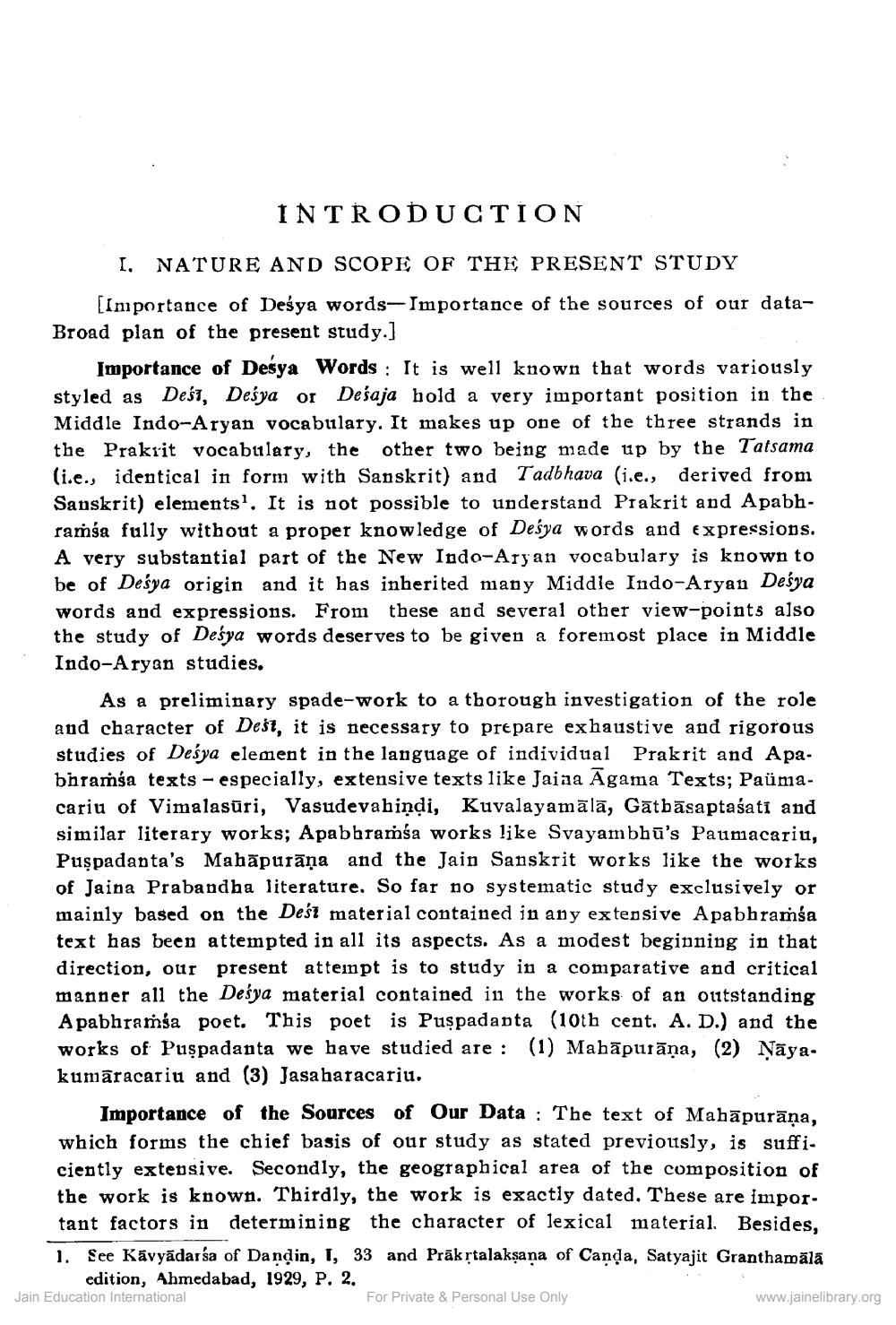________________
INTRODUCTION
I. NATURE AND SCOPE OF THE PRESENT STUDY
[Importance of Deśya words-Importance of the sources of our dataBroad plan of the present study.]
Importance of Deśya Words: It is well known that words variously styled as Desi, Desya or Desaja hold a very important position in the Middle Indo-Aryan vocabulary. It makes up one of the three strands in the Prakrit vocabulary, the other two being made up by the Tatsama (i.e., identical in form with Sanskrit) and Tadbhava (i.e., derived from Sanskrit) elements'. It is not possible to understand Prakrit and Apabhramsa fully without a proper knowledge of Desya words and expressions. A very substantial part of the New Indo-Aryan vocabulary is known to be of Desya origin and it has inherited many Middle Indo-Aryan Desya words and expressions. From these and several other view-points also the study of Desya words deserves to be given a foremost place in Middle Indo-Aryan studies.
As a preliminary spade-work to a thorough investigation of the role and character of Dest, it is necessary to prepare exhaustive and rigorous studies of Desya element in the language of individual Prakrit and Apabhramsa texts - especially, extensive texts like Jaina Agama Texts; Paumacariu of Vimalasūri, Vasudevahindi, Kuvalayamālā, Gatbāsaptasati and similar literary works; Apabhramśa works like Svayambhu's Paumacariu, Puspadanta's Mahapurāņa and the Jain Sanskrit works like the works of Jaina Prabandha literature. So far no systematic study exclusively or mainly based on the Dest material contained in any extensive Apabhramsa text has been attempted in all its aspects. As a modest beginning in that direction, our present attempt is to study in a comparative and critical manner all the Desya material contained in the works of an outstanding Apabhramsa poet. This poet is Puspadanta (10th cent. A. D.) and the works of Puspadanta we have studied are: (1) Mahapuraṇa, (2) Nayakumaracariu and (3) Jasaharacariu.
Importance of the Sources of Our Data: The text of Mahāpurāṇa, which forms the chief basis of our study as stated previously, is sufficiently extensive. Secondly, the geographical area of the composition of the work is known. Thirdly, the work is exactly dated. These are important factors in determining the character of lexical material. Besides, 1. See Kavyadarsa of Dandin, I, 33 and Prākṛtalakṣaṇa of Canda, Satyajit Granthamālā edition, Ahmedabad, 1929, P. 2. For Private & Personal Use Only
Jain Education International
www.jainelibrary.org




